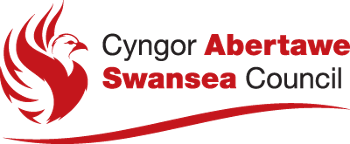Walking near livestock
One of the distinctive features of Gower is the large areas of lowland heath commons where farmers who hold commoners rights are able to graze their livestock. If you are planning walks in these areas there are a number of tips to keep in mind.
There are no field boundaries across the commons allowing the livestock to graze across a large area. This means that if you are using one of the many rights of way in Gower you may come across these animals. The most common livestock you may see are cows, sheep and horses. It is by allowing these animals to graze freely that the area has become so diverse in its wildlife and habitat.
To enjoy the countryside at its best try to be aware of your surroundings and try to stay away from animals if possible and be aware of their movements. It is especially important during spring when animals may be raising their young.
Advice for walkers
- avoid getting between cows and their calves. You may be seen as a threat to their young especially if you have a dog
- be prepared for cattle to react to your presence especially if you have a dog with you
- move around the herd quickly and quietly where possible. You may need to change the path you are using to do this
- keep your dog close and under control around any livestock
- if your dog is threatened by cows don't hold onto it. Let go of the lead to allow the dog to run to safety
- don't put yourself at risk
- don't panic or run as this can scare the cows. Walk away quietly.
Dog walking code
The dog walking code has been produced to help ensure safe and happy walks for you, your dog and others.
- Ensure your dog is under effective control, which means:
- you have a short lead with you and use it when needed (eg around livestock, near cliff edges or where signage requests it)
- you do not let your dog off the lead unless you keep it in sight and close enough to come back to you on command
- Prevent your dog from approaching horse riders, cyclists, or other people and their dogs uninvited.
- Keep your dog with you on paths or access land and don't let it stray into crops including fields of grass, fruit and vegetables.
- Never let your dog worry or chase wildlife or livestock. Follow advice on local signs to reduce disturbance to plants and animals.
- Stay SAFE around farm animals and horses:
- stop, look and listen befors entering a field; be aware of any animals present
- always keep your dog on a short lead
- find the safest route around animals, giving them plenty of space and using paths or access land where possible
- exit the area calmly and quickly if threatened, releasing your dog to make it easier for you both to reach safety
- Always bag and bin your dog's poo wherever you are. You can use any public waste bin or your bin at home.
- Never leave bags of dog poo lying around, even if you intend to pick them up later. Containers and deodorised bags can make them easier to carry.
- Ensure your details are on your dog's collar and it is microchipped, so you can be reunited quickly if it is lost.
- Keep your dog's vaccinations and worming up to date. Ask your vet for more information.
- Contact your local authority, or look out for signs, to get more information about what to do and where to go in your area.
Advice for farmers
When allowing your livestock to graze the commons you should be aware that walkers may also be using the area. If you think a particular animal is likely to be upset by walkers or is likely to behave aggressively you should consider whether they should be allowed to graze the common land.
Cattle and public access in England and Wales advice from HSE (opens new window)
If an incident occurs
If you are attacked by livestock or suffer a frightening incident you should notify the Health and Safety Executive (HSE) by emailing concerns@hse.gov.uk. If it is a serious incident you should also contact the Police.
